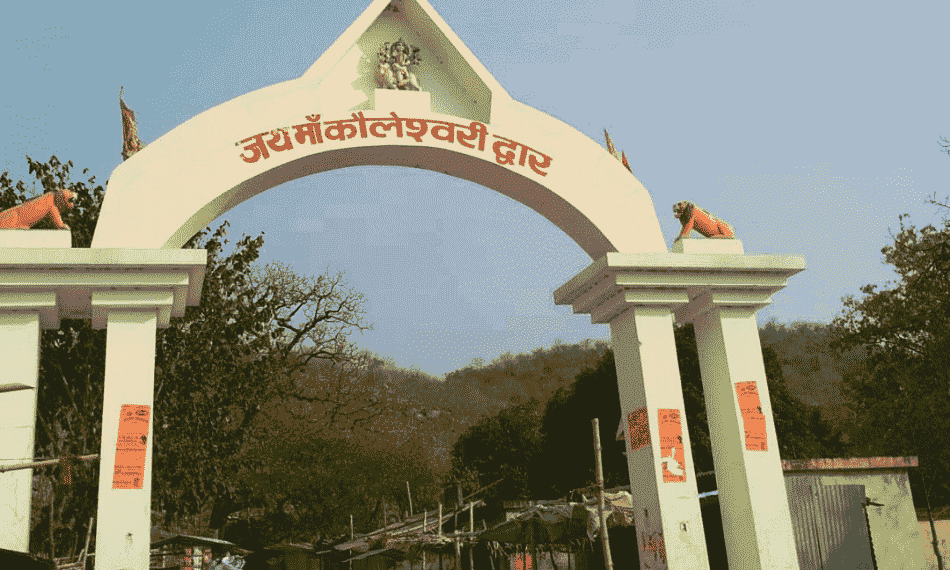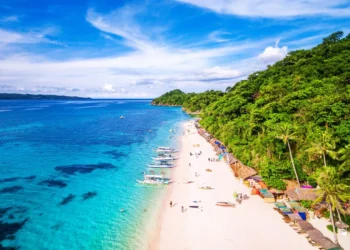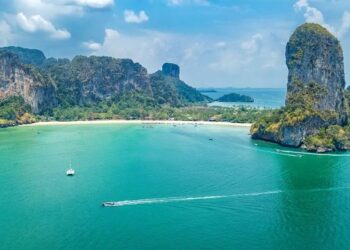Kauleshwari Devi Temple, also known as Maa Kauleshwari Mandir, is a sacred shrine dedicated to Goddess Kauleshwari, a fierce form of Sati/Kali. Located in the rugged embrace of Kolhua Hill, Hunterganj block, Chatra district, Jharkhand, the temple is rooted in Vedic times, with ties to the Mahabharata and Ramayana. This temple is famed for its hilltop perch at 1575 feet, offering a mystic view called Akash Lochan (Sky Eye).
Interesting Fact: Revered as a Shakti Peeth, where Sati’s womb is believed to have fallen, the temple is a rare confluence of Hindu, Jain, and Buddhist faiths, with a nearby cave housing a 3-foot idol of Jain Tirthankara Parshvanath, marked by nine serpent hoods.
Overview of Kauleshwari Devi Temple
Kauleshwari Devi Temple, atop Kolhua Hill, 9.7 km from Hunterganj and 20 km from Chatra, is a key pilgrimage site for Shaktism, Jainism, and Buddhism. Known for its 3-foot black stone Kauleshwari idol, the 10-acre complex includes a Shiva shrine, a Jain temple, and a Buddhist cave. Devotees offer vermilion, flowers, and coconuts, believing the goddess protects families and heals ailments like squinting eyes. Gautama Buddha, on attainment of enlightenment, spent some time here before proceeding to Sarnath for preaching. He also had his head shaved here. Now-a-days, many Buddhists, come to have their heads shaved here. Managed by the Kauleshwari Devi Mandir Prabandh Samiti since 1980, it hosts 20,000 visitors during festivals like Basant Panchami. A sacred hub, it blends Jharkhand’s tribal and Vedic heritage.
History of Kauleshwari Devi Temple
Lore ties the temple to the Vedic period, with the Mahabharata naming Kolhua Hill as King Virat’s capital, where he installed the Kauleshwari idol. Tales claim the Pandavas worshipped here during their exile, and Lord Rama, Sita, and Lakshman rested here during their vanvas. Jains revere it as the birthplace of 10th Tirthankara Sheetalnath, with a temple built in 1682, later destroyed by invaders. The current structure, from the 10th century, was restored in 1980. A 2020 lockdown breach saw 20,000 devotees gather for mundan rituals, per Telegraph India. No ancient inscriptions remain, but 50,000 flock during Ram Navmi, drawn by its epic legacy.
Architecture of Kauleshwari Devi Temple
Kauleshwari Devi Temple, on a 10-acre plot at 1575 feet, follows a simple North Indian style with a low dome. The main shrine, 6 meters by 6 meters, built of black sandstone, houses a 3-foot Kauleshwari idol. A 4-meter by 4-meter Shiva shrine, 5 meters east, holds a 2-foot linga. The Jain temple, 5 meters by 5 meters, rebuilt in 1980, has a 2-foot Parshvanath idol. A Buddhist cave, 10 meters west, spans 3 meters by 2 meters, with rock-cut relics. A 300-foot-long, 180-foot-wide, 30-foot-deep pond lies 50 meters north, holding broken Jain idols. The entrance, a 4-meter-wide path, is unmarked, lined by trees. The rocky yard, 2000 square meters, holds 5000 devotees. Access is via 700 stairs or a 2-hour trek.
Sculptures of Kauleshwari Devi Temple
The temple’s heart is the 3-foot Kauleshwari idol, black stone, four-armed, holding a trident and skull, draped in red. The Shiva linga, 2 feet tall, is unadorned. The Jain temple’s 2-foot Parshvanath idol, black stone, sits under nine serpent hoods, facing west. The cave has 10 Digambar Jain idols, 1 foot tall, carved on a wall, showing Tirthankaras like Rishabhdev and Mahavir, per Paperblog. Shrine walls bear 12 carved panels, 0.6 meters by 0.4 meters, depicting Kali’s battles and Ramayana scenes, etched 2 centimeters deep, unpainted. No arch exists, but rock-cut Buddhist figures from Harshvardhana’s era, 7th century, add mystique. The idols’ ancient craft draws eyes.
Information for Travelers
How to Reach Kauleshwari Devi Temple, Chatra
Atop Kolhua Hill, 9.7 km from Hunterganj, 20 km from Chatra, the temple is reached by jeep, auto, or trek, set by forests and the Lilajan River.
By Air
Gaya Airport, 73.9 km away, connects to Delhi (2 hours), Kolkata (1 hour). Taxis to Kolhua Hill take 1.5 hours. Birsa Munda Airport, Ranchi, 140 km, takes 3 hours.
By Train
Chatra Railway Station, 11.37 km away, a small halt on the Sahibganj Loop, links to Gaya (1 hour). Autos to the hill take 20 minutes. Gaya Junction, 78.8 km, connects to Kolkata (5 hours), Delhi (12 hours).
By Road
Kolhua Hill connects to Chatra (20 km, 30 minutes), Hunterganj (9.7 km, 15 minutes), Ranchi (140 km, 3 hours) via NH-22. From Chatra’s Jori block, take Bansingh to Dantar village, cross Nedho River. From Hunterganj, pass Kedli village, cross Falguni River. State buses cost ₹20–100; private buses run hourly. Taxis cost ₹500–1500. Autos cost ₹20–50, then trek or climb 700 stairs.
Hours and Entry
Open daily, 6:00 AM–6:00 PM. Free entry; puja costs ₹50–200. No photography in the sanctum. Wear clothing covering shoulders and knees; women wear sarees or suits, men wear kurtas or dhotis. Monkeys abound; secure food.
Best Time to Visit
November to February, temperatures 10–20°C, suits trekking. Weekdays see 1000 visitors; weekends, 3000. Basant Panchami (February) and Ram Navmi (April) draw 50,000; book early. Avoid April–June, 25–40°C, or monsoons for slippery trails.
Nearby Attractions
Bhadrakali Temple, 35 km in Itkhori, Hindu-Buddhist-Jain confluence.
Kunda Fort, 12 km, 17th-century ruins.
Goa Waterfall, 12 km, scenic cascade.
Tamasin Waterfall, 26 km, 50-foot fall.
Maludah Waterfall, 8 km, nature spot.
Final Thoughts
Kauleshwari Devi Temple in Chatra, Jharkhand, is a revered shrine showcasing ancient caves, Jain relics, and trekking paths drawing souls seeking divine grace and nature’s charm. Goddess Kauleshwari’s fierce grace and the hill’s ancient tales touch them who come, making it a place must see for for devotees and travelers alike among India’s holy spots.











